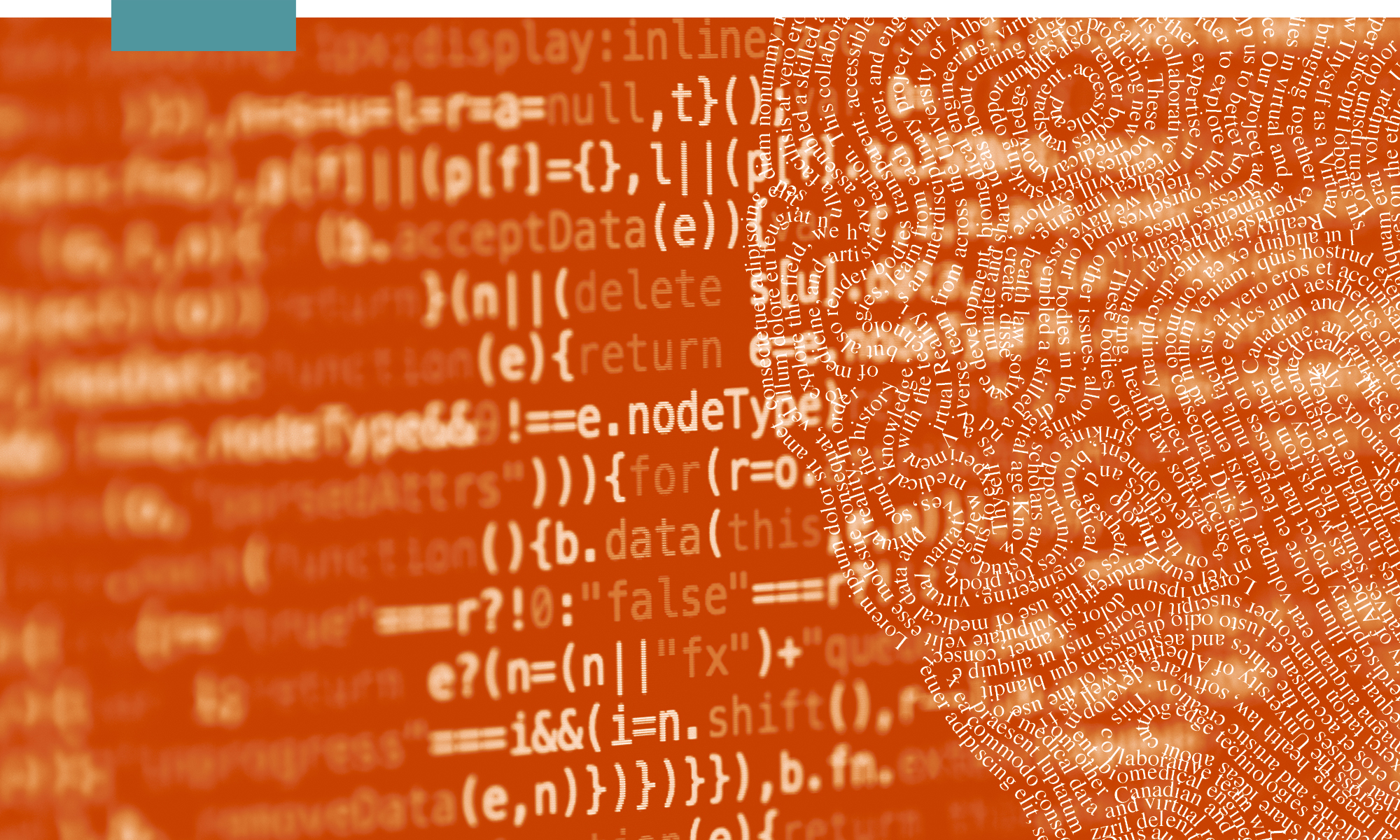My Data Body is a virtual reality (VR) artwork created at the University of Alberta as part of the interdisciplinary research creation project Know Thyself as a Virtual Reality. The project which developed from a previous artwork Deep Connection (Oliver 2021) brings together different forms of personal data such as medical scans, social media, biometric, banking and health data in an attempt to make visible and manipulable our many intersecting data corpuses so that in VR they can be held, inspected and dissected. In My Data Body, the medically scanned, passive, obedient, semi-transparent body (Cartwright 1995) becomes a data processing site that can be pulled apart, de- and re-composed or as Yuval Harari warns ‘surveilled under the skin’.
In My Data Body, the magnetic resonance (MR) scanned body of artist Marilène Oliver floats prone within a cloud of Oliver’s textual Facebook data. Into the semi-transparent, virtual body are multiple other data corpuses downloaded from social media platforms plotted into cross sections of the body. In the horizontal plane, Mac terminal data is plotted into bone, Google data into muscle and Facebook data into fat. In the vertical plane are plotted data usage agreements and into the depth plane are texts from various data privacy charters. Passwords and logins flow back and forth through veins and arteries, whilst high resolution retinal and dental scans and meshes of organs and bones are suspended within the quantified and datafied body (Lupton 2016).
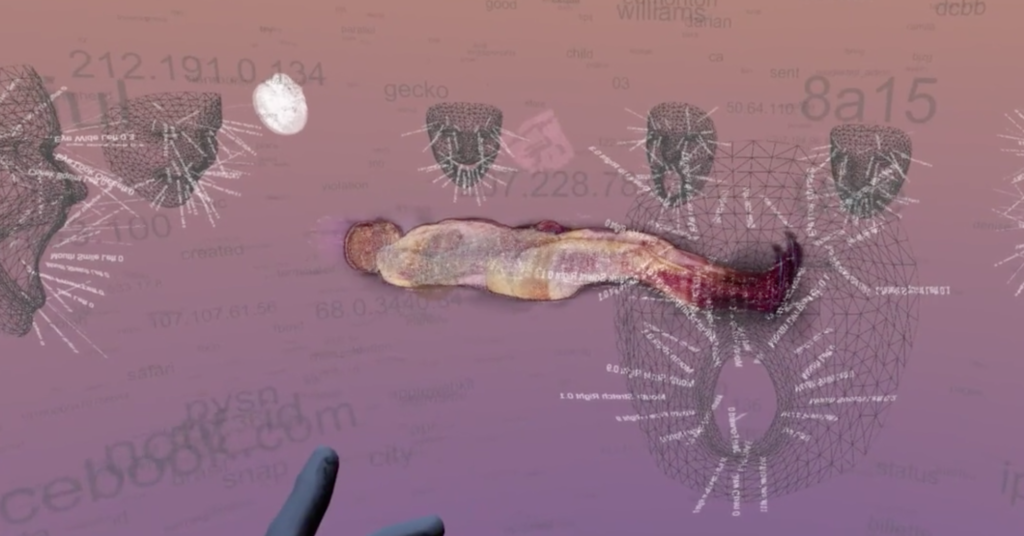
To echo historical anatomical public dissections, there is an audience of Oliver’s facial recognition scans wearing different emotions captured using an iPhone circling the body. Also recalling Renaissance anatomy and myths of Franciscan nuns performing dissections in order to find evidence of saintliness (Park 1994), Oliver’s ‘SIN’ (social insurance number) is pinned to her coccyx. This deeply hidden digital ‘SIN’ points to contemporary online cancel culture where a single post or tweet demonize the author forever. The My Data Body ‘dissection theatre’ is bathed in a blend of volcano ash lavender (Bridle) to forest fire orange in order to recall the immense amounts of energy needed to generate and process data and the impact this has on climate change (Mullaney 2021). At a touch of the VR controller’s buttons, My Data Body can be enlarged or shrunk so that the user can be engulfed in My Data Body or hold it miniscule in their virtual hands. As the body of the user interfaces with My Data Body (Hansen 2006) it both invades and possesses it.
DECOMPOSITION OF MY DATA BODY
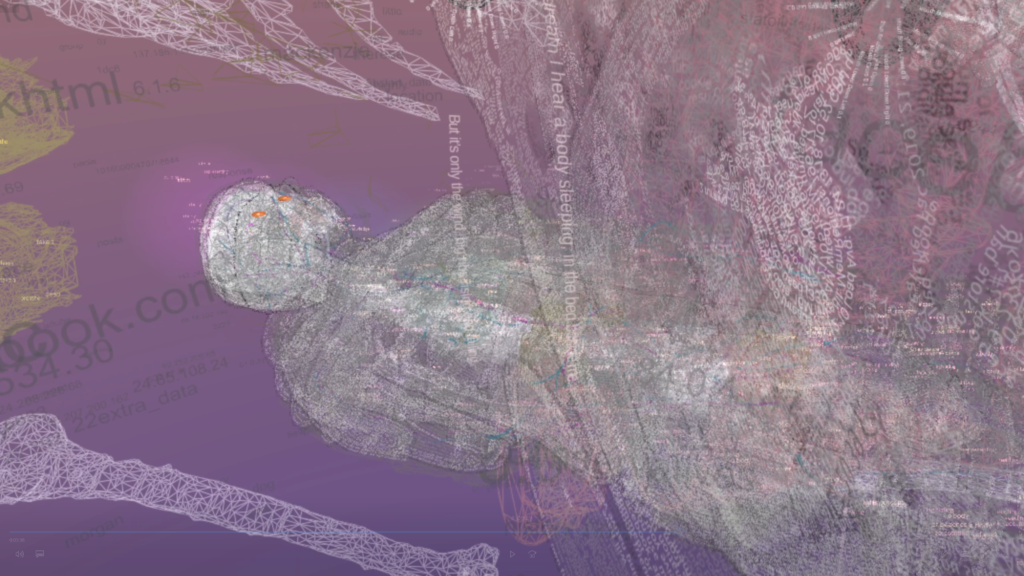
Each of the elements in My Data Body: the scan data, organs, bones, cross sections can be extracted from the body, inspected individually elsewhere in the scene. Sound works created by Scott Smallwood and Stephan Moore that incorporate biometric digital recordings of Oliver’s voice and heartbeat as well as textural sound (such as scratching, gurgling, squelching and resonances) are attached to each of the elements so that as My Data Body is dissected visually and spatially, it is also ‘de/re-composed’ sonically. Indeed, the sound composition is only created as bones, organs and slices are extracted. The skeleton for example is a sound composition fractured into 8 parts that is solely experienced by removing the bones from the body and piling them in a heap outside of it. Furthermore, using the gamification potential of the VR medium, bones, organs and slices are all programmed to return to the body after a certain time of inactivity, so there is the time pressure to extract and resituate the data in time to hear it. Also using the medium’s unique ability to sonically reposition the listener, each of the facial scan masks that surround My Data Body has Oliver’s voice reciting personal her data at different pitches that the user can cycle through using buttons on the controller giving the sense of being trapped in a dizzying electronic melody.
POETRY EMBEDDED INTO MY DATA BODY
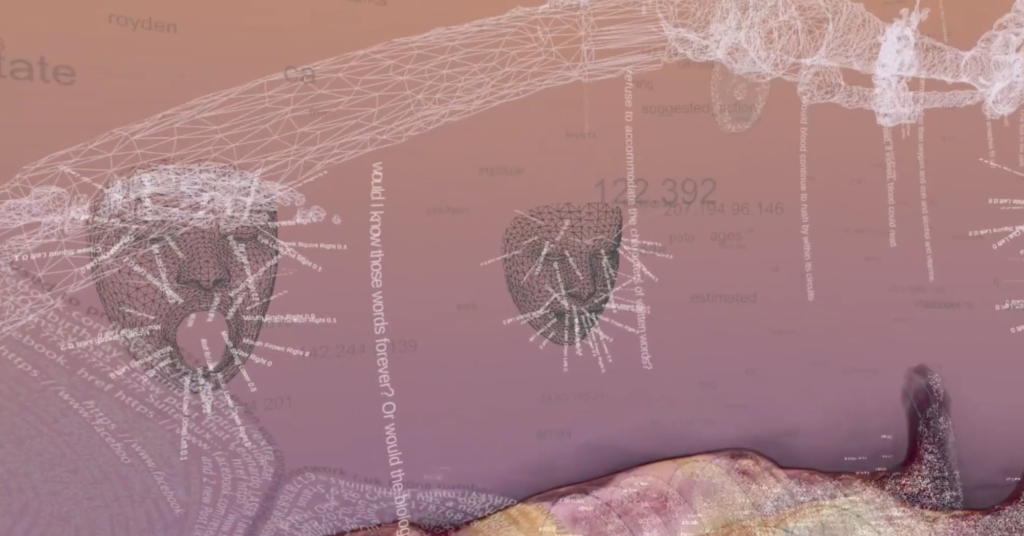
Poetic text written by J.R. Carpenter flows through and dangles from My Data Body. Carpenter composed poetic verse for each of the bones so that when the bones are pulled out of the body it can rotated and read. From the ribcage for example hang the phrases: I dream I hear a body sleeping, in the bed beside me. But it’s only the wind, big ribs rising and falling. It’s only the house, breathing through its nose. Pasted into the back of the retinal scans are the words: (I cannot imagine a mark on my body any deeper than the memory of text burned into my retina, left smouldering in my brain).
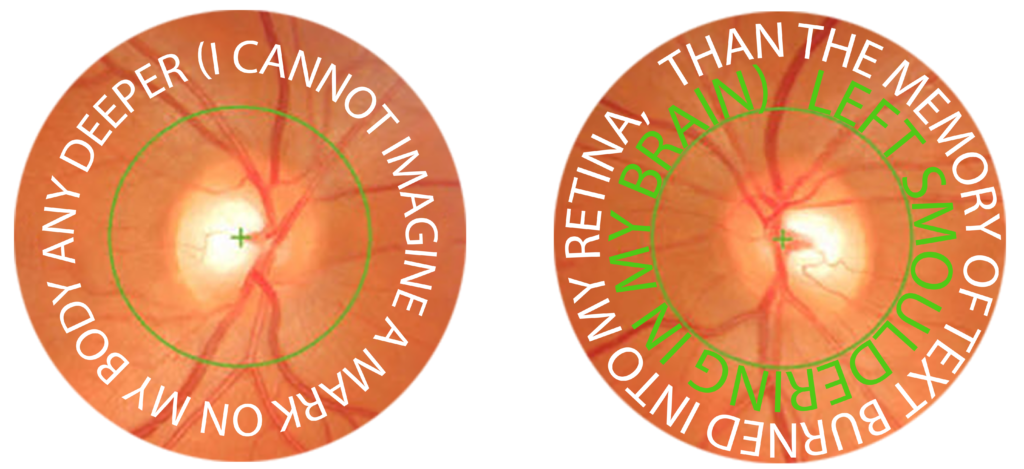
A stream of text particles washes over and through My Data Body. For this Unity’s particle system typically used to simulate smoke, clouds or fire effects, was repurposed to generate free verse poetry. Unity’s particle effects are generated from gridded image files which are sub-divided and sequentially emitted from a specific location in the scene with various speed, colour, transparency and direction settings. Carpenter used the form of a 4 x 4 grid to create two particle streams of text that pass through My Data Body to socially and historically complicate and sensualize the datafied corpuses of My Data Body.
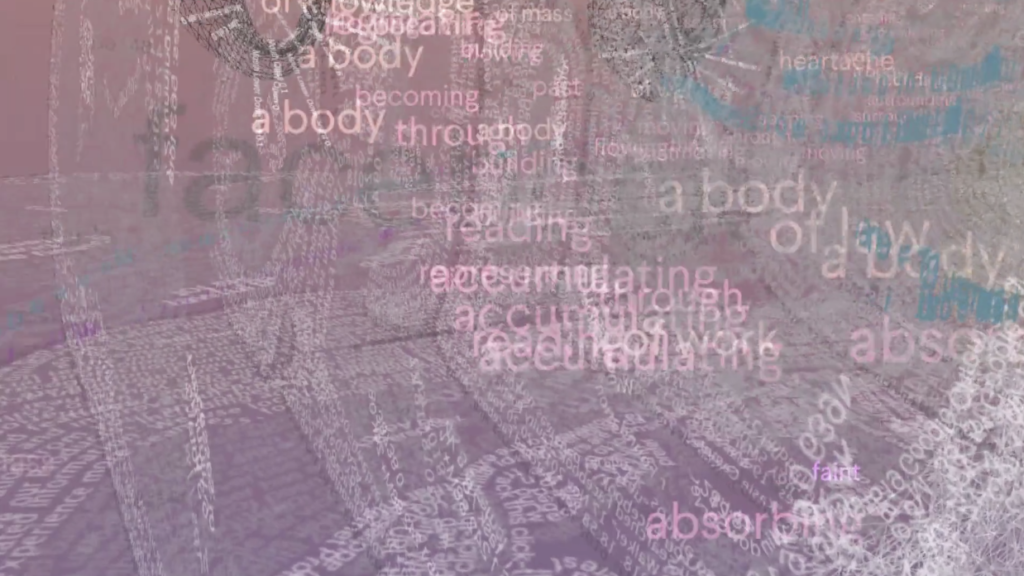

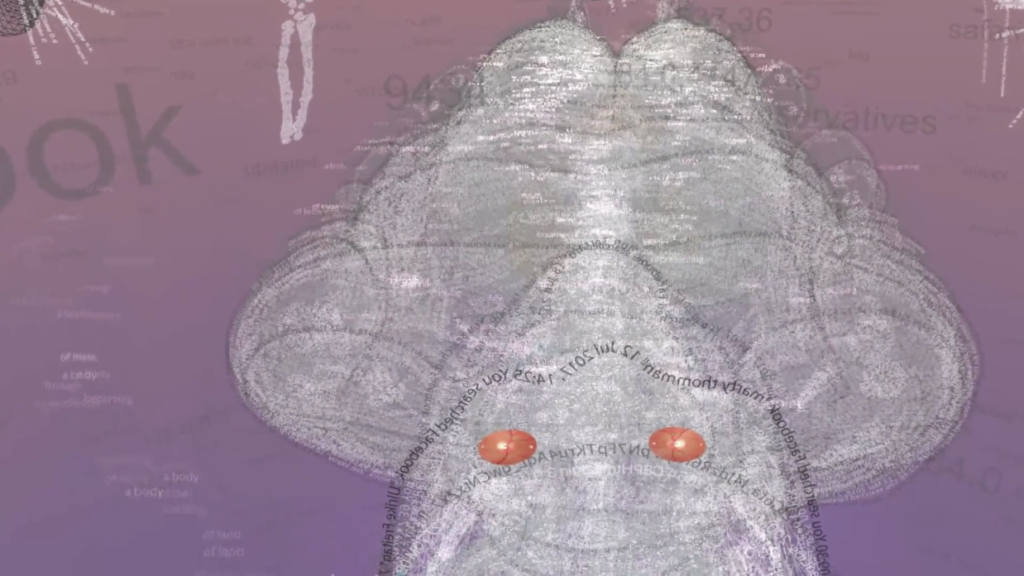
My Data Body is an interdisciplinary and collaborative project made as part of the research project Know Thyself as a Virtual Reality (KTVR). Collaborators include Marilène Oliver (visual art), Scott Smallwood (sound), J.R Carpenter (poetry) and Stephan Moore (sound). My Data Body was made with the assistance of Daniel Evans, Kirtan Shah, Walter Ostrander, Chelsey Campbell, Alissa Rossi and Jiayi Ye and benefitted greatly from the expertise of the whole KTVR research team.
My Data Body is both a stand alone VR experience and an art installation including sculpture, projection and prints.
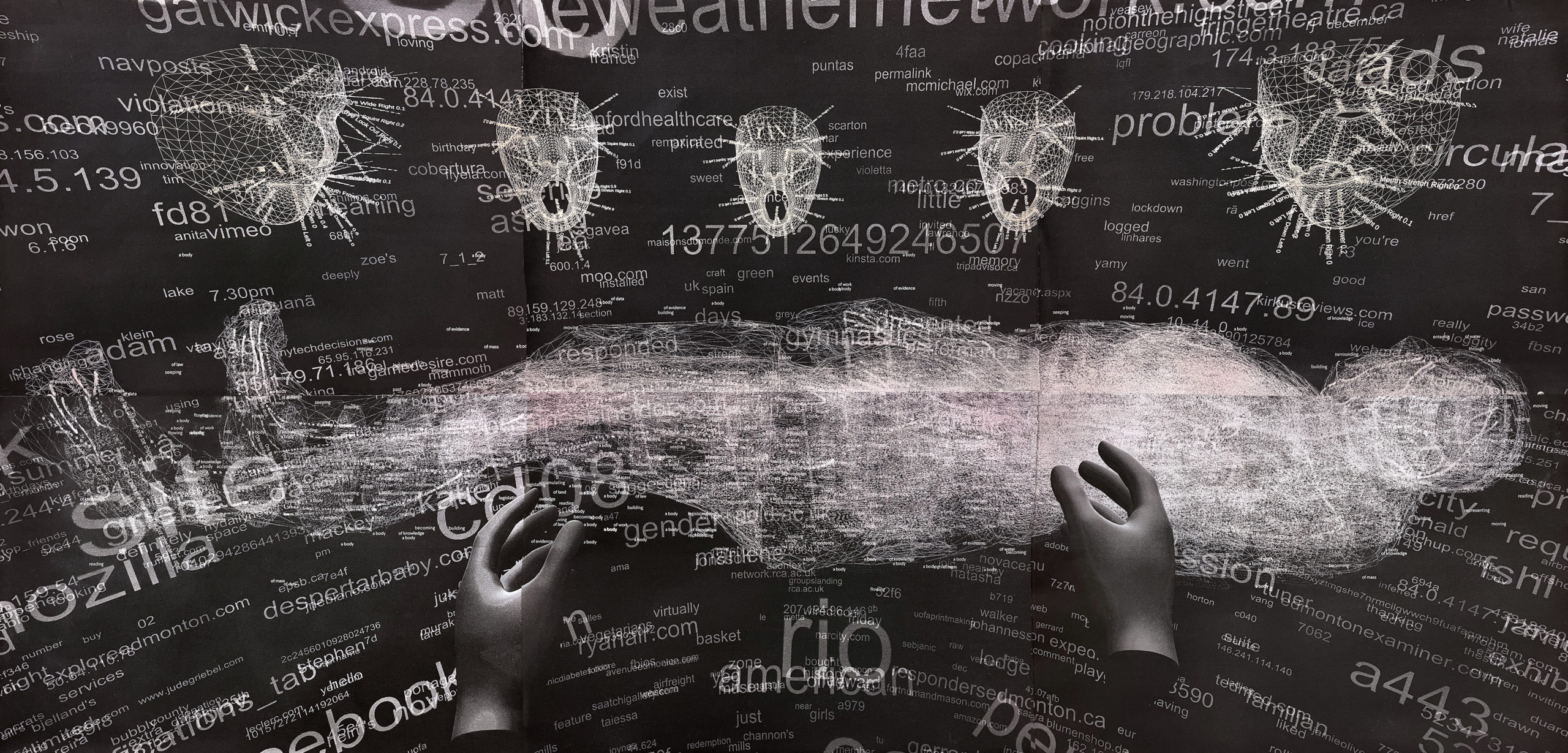
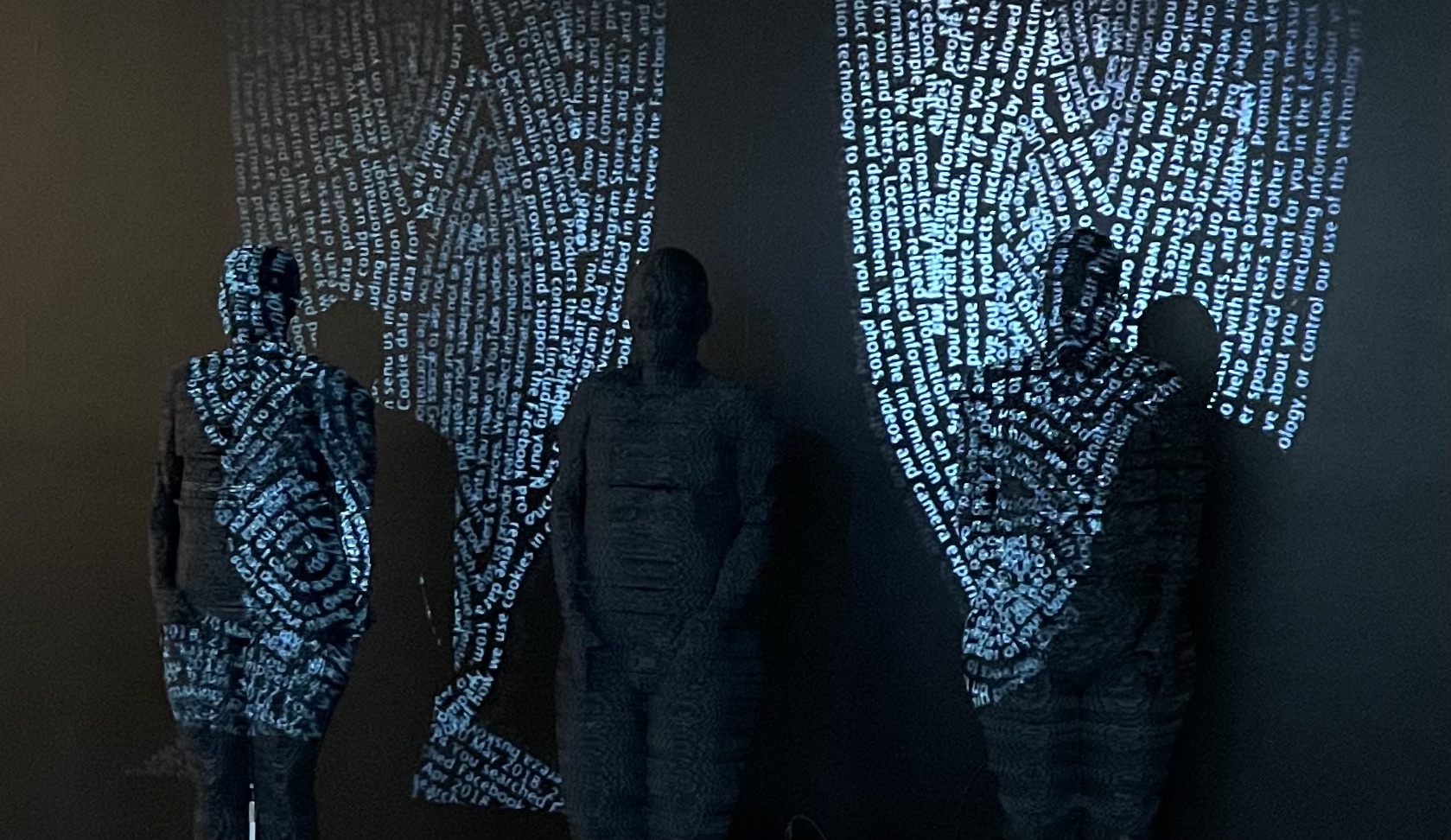
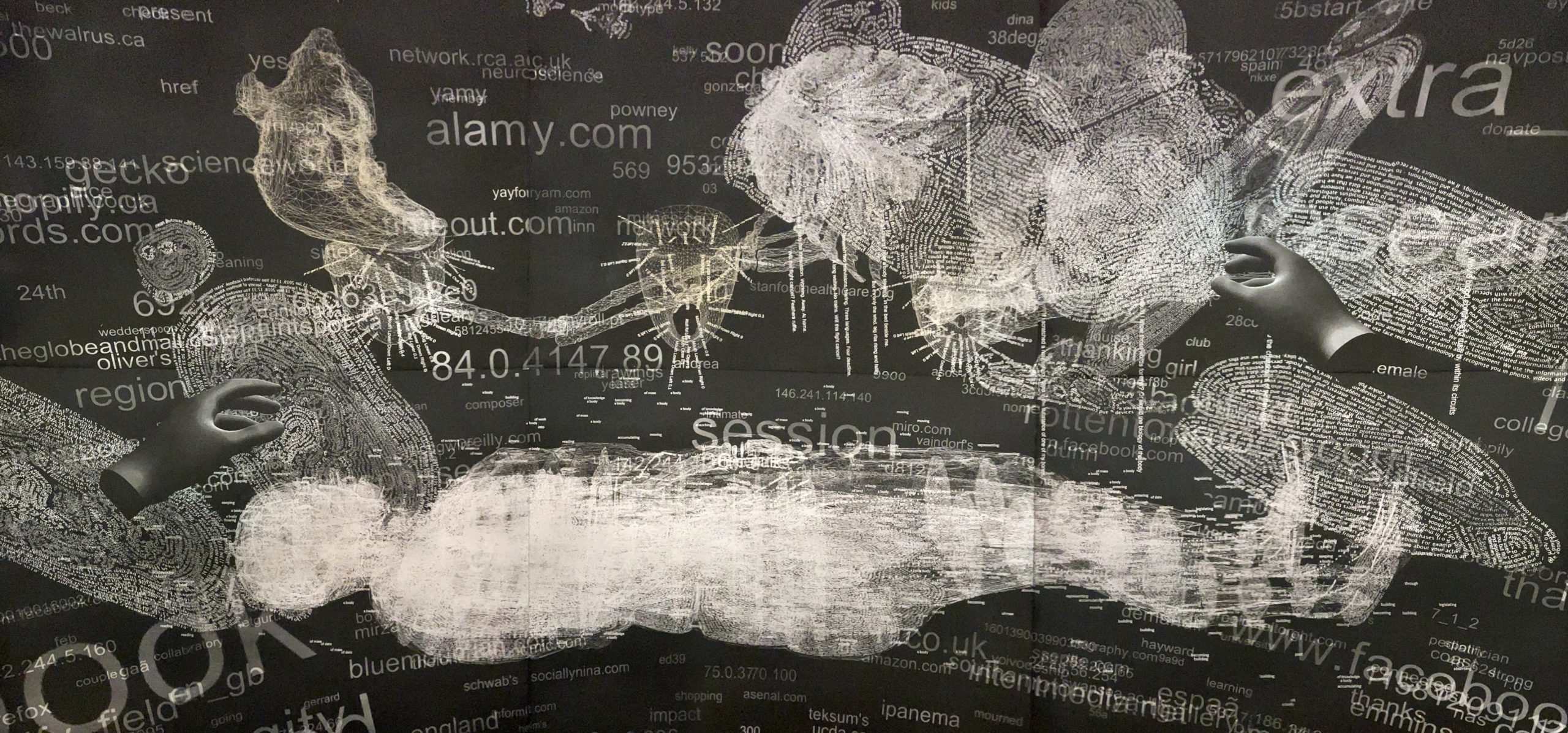
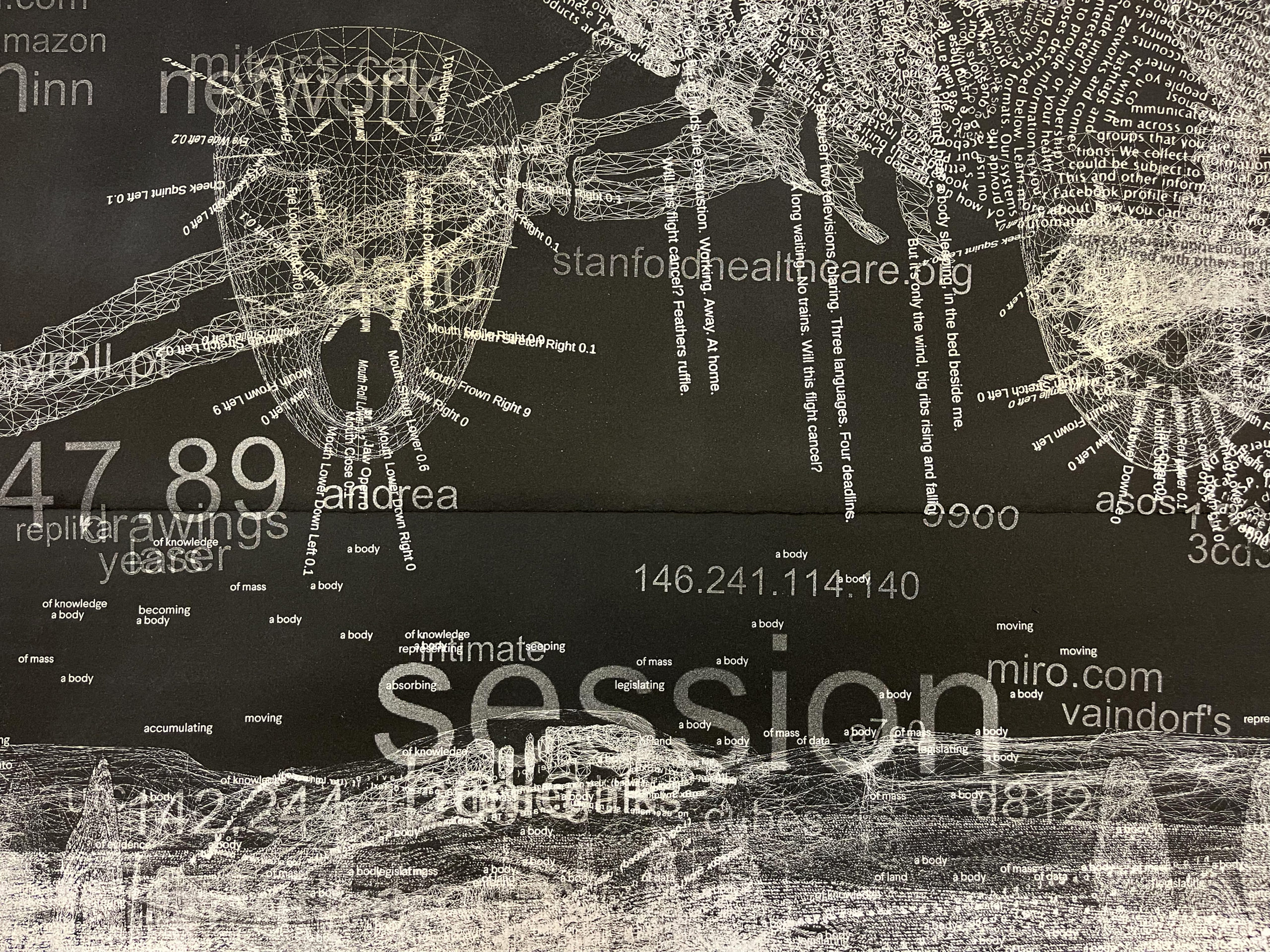
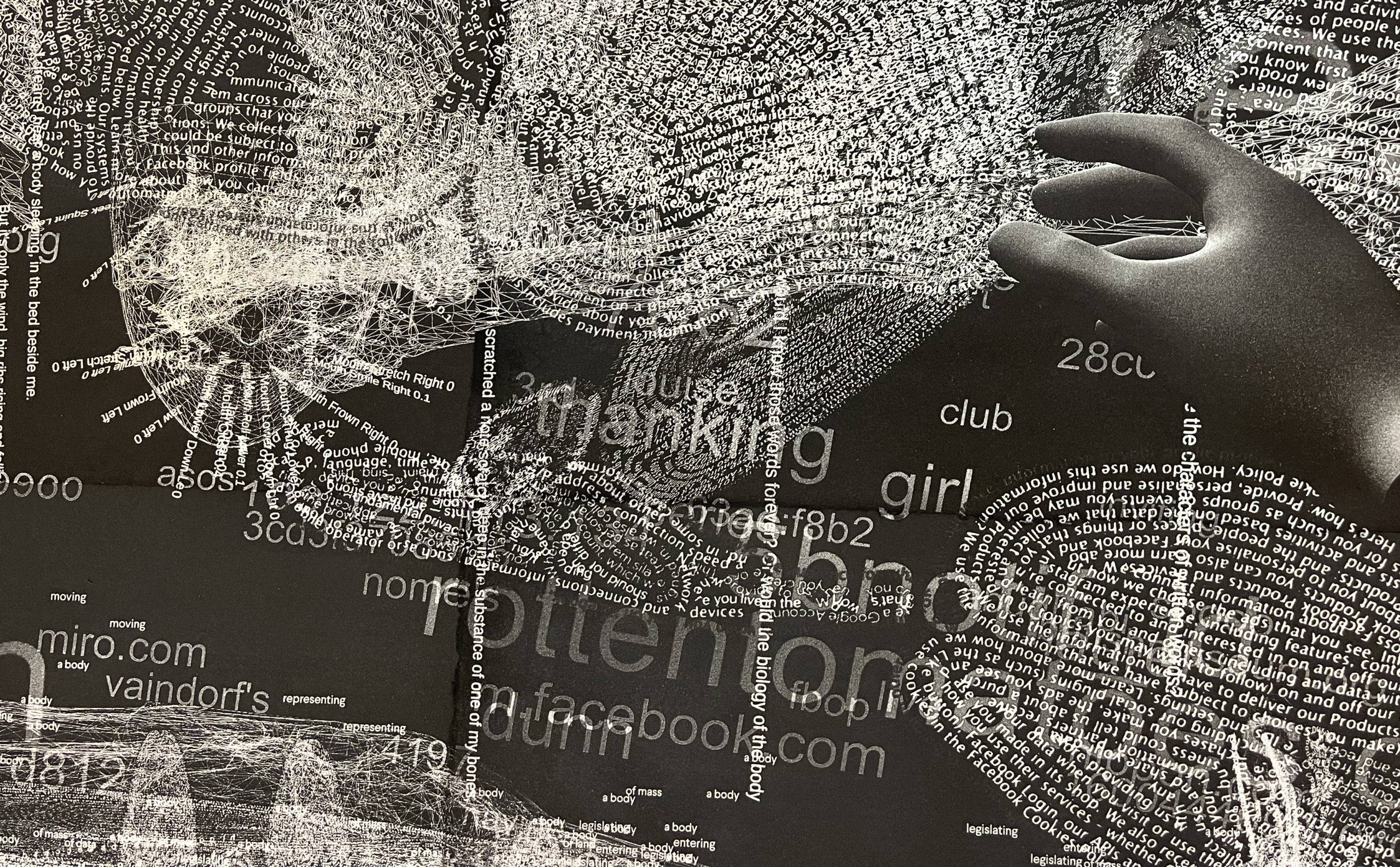
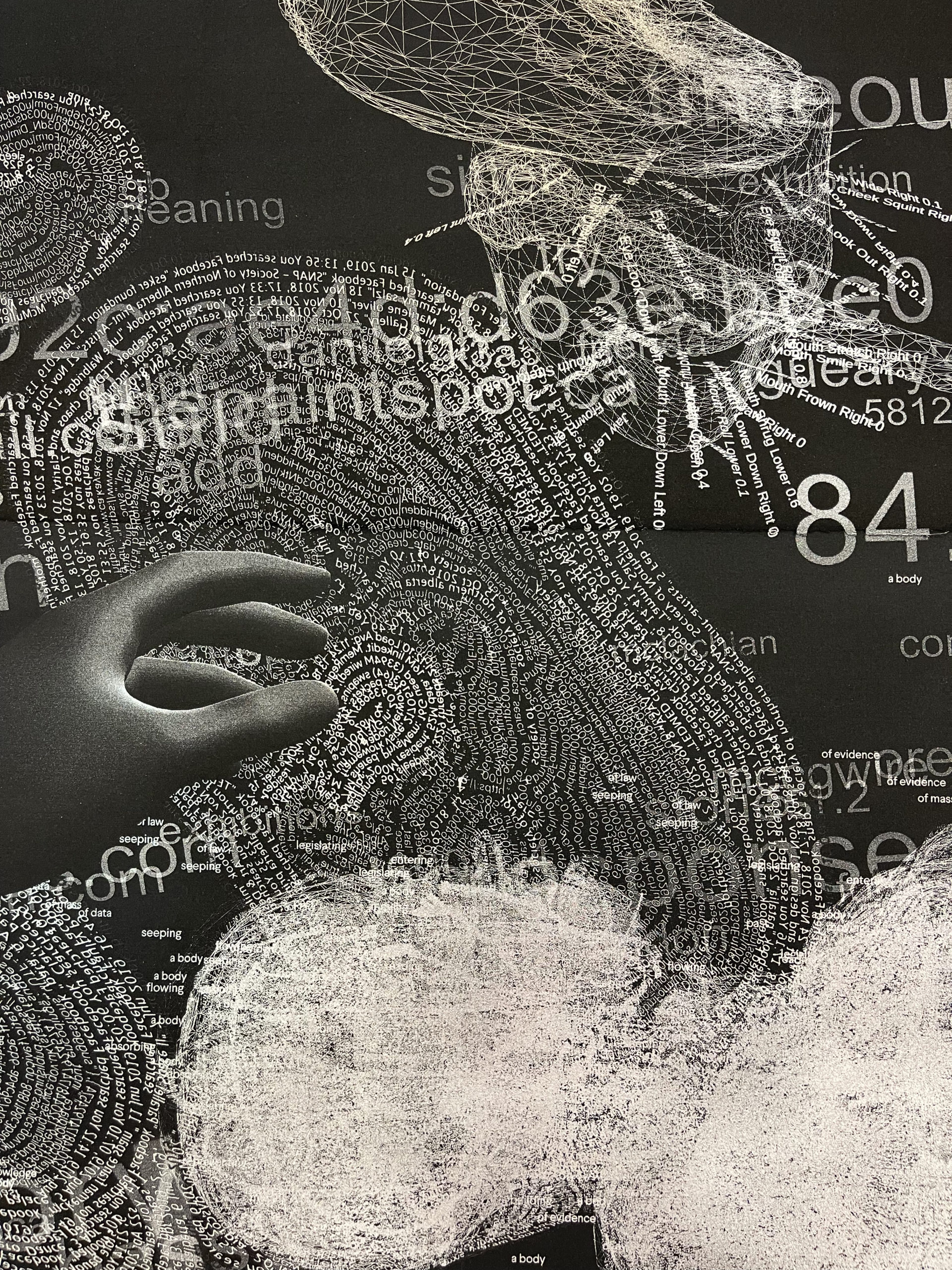
References
Bridle, J. (2018) New Dark Age: Technology and the End of the Future. Verso Books, London, UK.
Cartwright, L. (1995) Screening the Body: Tracing Medicine’s Visual Culture, University of Minnesota Press, Minnesota
Hansen, M. (2006) Bodies in Code: Interfaces with Digital Media. Routledge, UK.
Lupton, D. (2006) The Quantified Self. Polity, Malden, MA.
Mullaney, Thomas et al. (2021) Your Computer is on Fire. MIT, Cambridge, MA.
Harari, Y. (2020) The World After Coronavirus, The Financial Times. March 19 2020.
Oliver, M et al. (2021) Deep Connection: Making Virtual Reality Artworks with Medical Scan Data.2021 IEEE VIS Arts Program, New Orleans, Oct 24 – Oct 29 2021, 37-44. VISAP, USA
Parks, K. (1994) The Criminal and the Saintly Body: Autopsy and Dissection in Renaissance Italy. Renaissance Quarterly, vol 47. 1-33.
